No products in the cart.
Everyone knows the spectacular blue spruce, but a new kid is on the block, the baby blue spruce. So, what makes this species different compared to the Colorado blue spruce?
Well, the needles have a uniform blue color. The astonishing thing is the baby blue spruce trees look fabulous in groupings or even growing as a single specimen.
PLANT NAME: Picea pungens ‘Baby Blue’ Spruce
PLANT TYPE: Tree
NATIVE AREAS: North America
GROWTH: 15 to 30 feet tall and up to 15 feet wide
FERTILIZER: Slow-release granule fertilizer or organic compost
LIGHT REQUIREMENT: Full to Partial Sun
PROPAGATION: Cuttings and Seed
SOIL TYPE: Adaptable
TEMPERATURE: Adaptable
TOXICITY: Non-toxic
WATERING: Water Weekly
USDA HARDINESS ZONES: 4 to 7
More About Baby Blue Spruce Tree
If you do not have the space to plant a Colorado blue spruce, then the dwarf variety, the baby blue spruce, is what you need. The dwarf tree remains under 25 feet, and you can grow them in group planting to create a privacy screen.
The evergreen is a sturdy tree with a fancy botanical name Picea pungens Baby Blue. It grows well in cooler regions with its classic silvery blue foliage. The spruce trees grow a pyramid shape and have horizontal branches that reach down to the ground.
While the tree does not flower, it produces cones in late summer to early fall. The cones’ color is gray-brown on mature trees. In contrast, young trees have red arils on the branch tips. Compact branch growth helps with reducing gusts of wind.
Furthermore, it is an ideal tree to grow at the entrance of the home to decorate as a Christmas tree with outdoor lights.
Picea Pungens Baby Blue Spruce Care Tips

The baby blue spruce grows as a robust tree in the USDA hardiness zones 4 to 7. The tree has a long lifespan under the right growing conditions, up to 80 years. The tree adapts to different soil types but does not tolerate standing water.
The outdoor tree is deer resistant, and with the height, we recommend not planting it under power lines. Once established, it is a drought-tolerant species and thrives in polluted urban spaces.
Planting Baby Blue Spruce
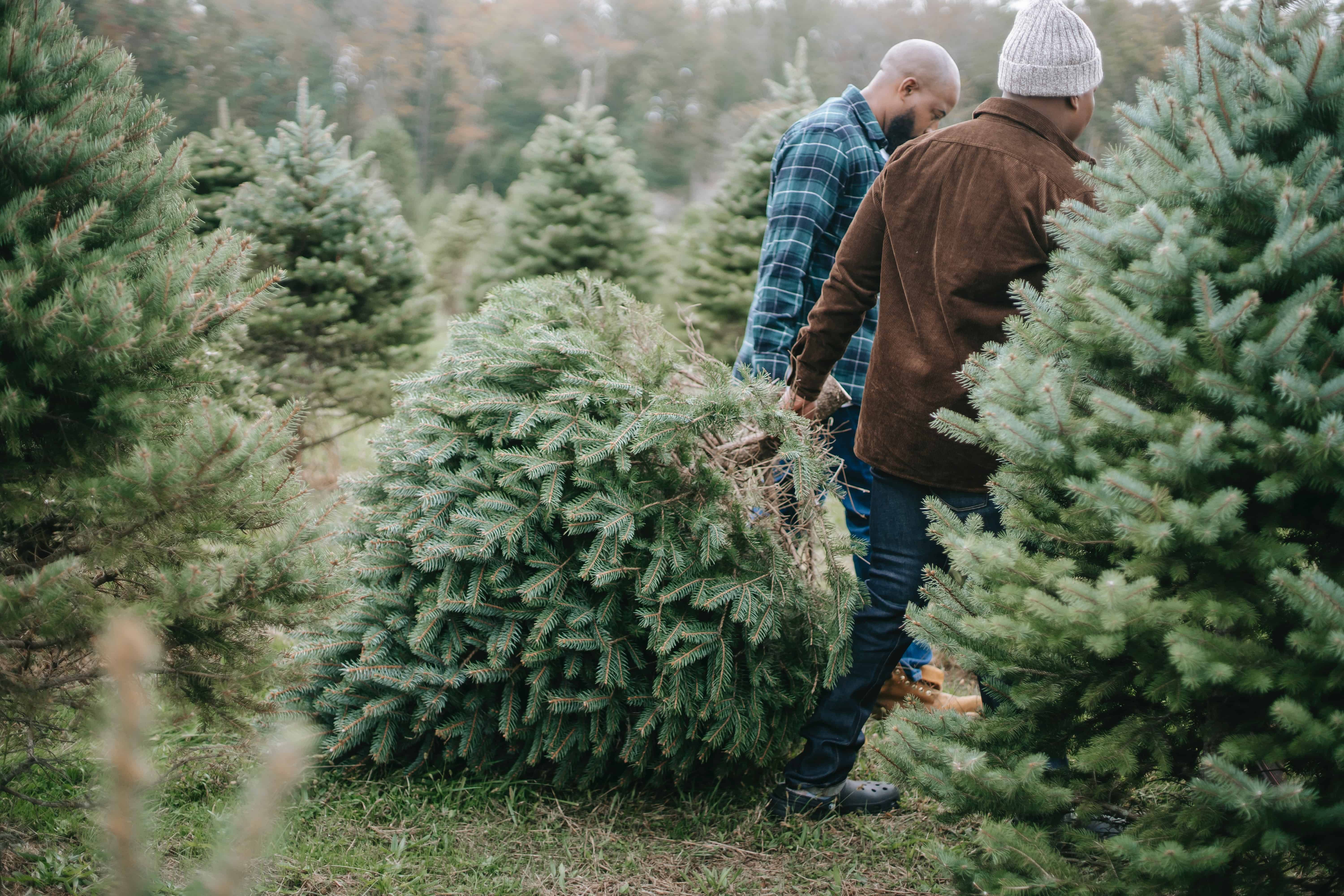
For planting your baby blue spruce trees as a privacy hedge, we recommend spacing them up to 20 feet apart.
Dig a hole that is the same depth as the root ball in the container and make it 1 1/2 times the width.
Take your sharp spade to remove the outer circling roots.
Place the root ball in the hole and backfill it with soil and water once you reach halfway, allowing the soil to settle in. Continue until the holes fill up with soil.
Moisten around the planting area and keep the ground moist for the first few years as your tree grows.
The Best Spot For Your Baby Blue Spruce Trees
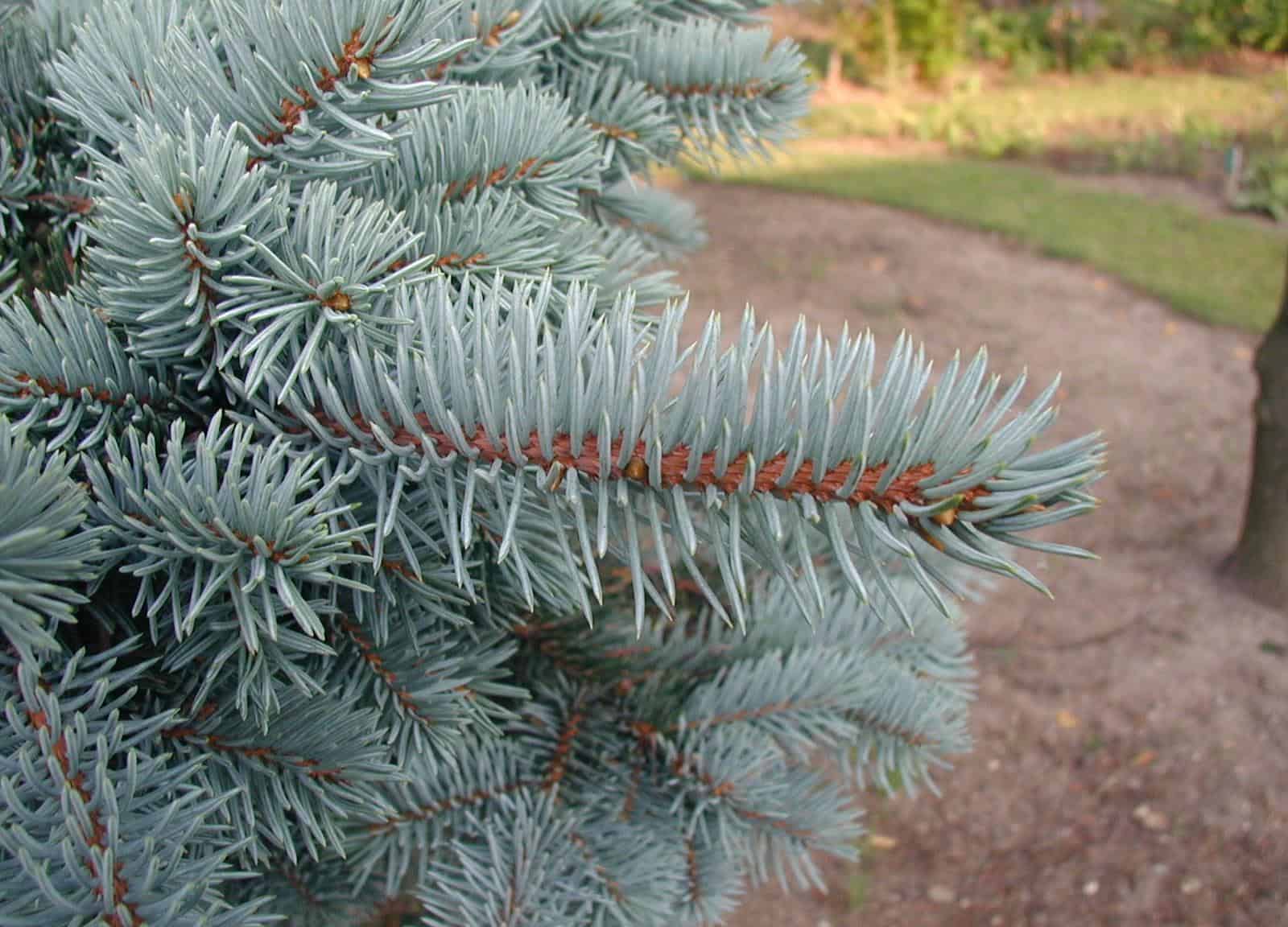
While the blue, white, and green spruce tree grows in rocky mountains, they all prefer full sun. With six hours of full sun, your tree can reach its potential growth. It will grow dense foliage and display beautiful silvery blue needles.
Your tree can tolerate part shade, but it is best planted in direct sunlight.
The Best Soil For Your Baby Blue Spruce Trees
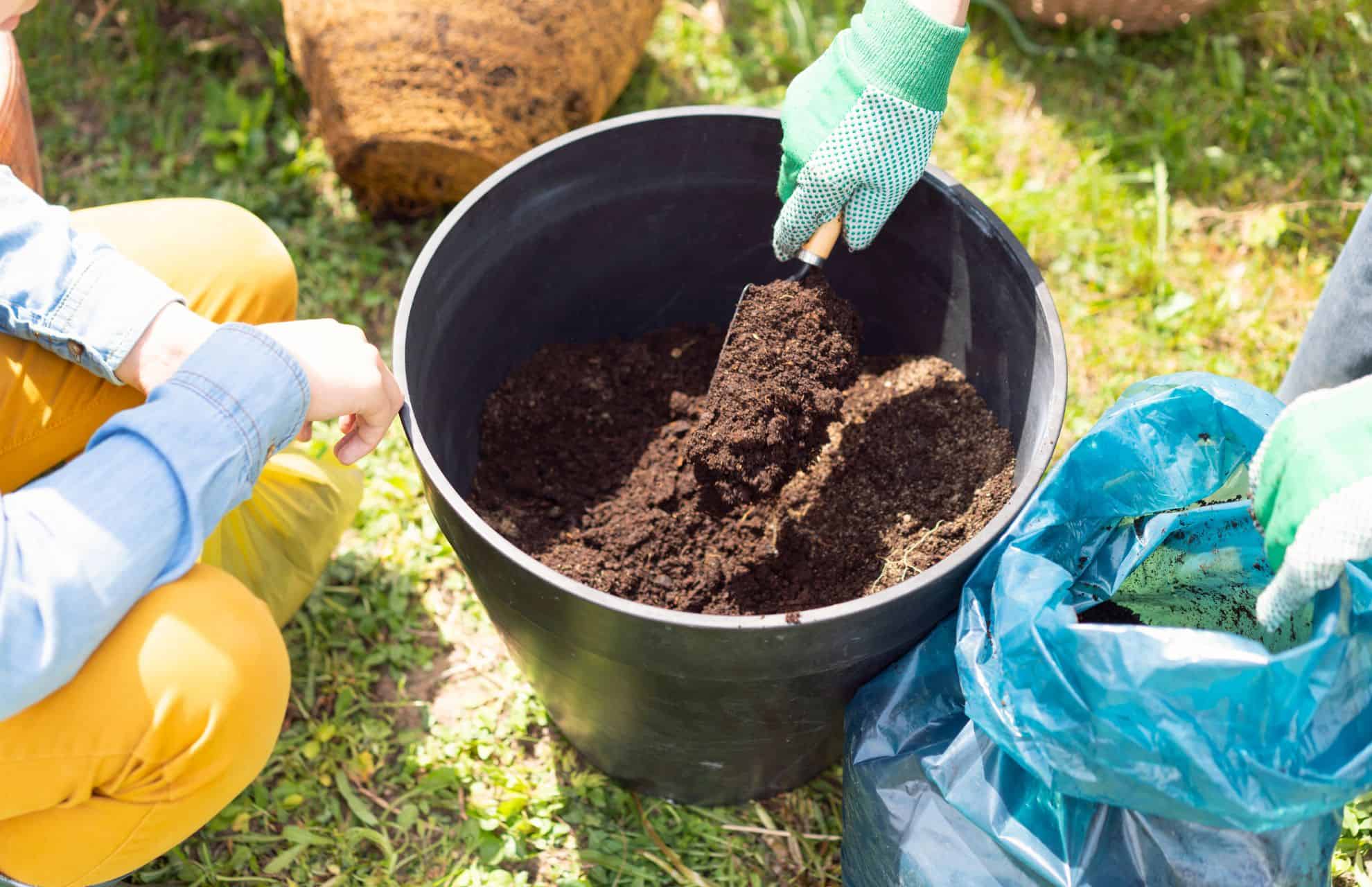
The baby blue spruce thrives in a sunny spot in small to large landscapes in well-drained soil. You can amend the soil with organic matter when planting it. Hence, it can grow in loamy, clay, or sandy soil. But it needs to drain well and be slightly acidic soil.
Watering Your Spruce Tree
The baby blue spruce tree is a drought-tolerant species making it a low-maintenance tree. Yet, you will need to water your tree’s base more during the first season.
We recommend adding some mulch around the base to help retain moisture. Your tree can handle dry soil compared to soggy soil.
We recommend checking the soil during dry spells to see if your tree needs watering. So, ensure that the soils are well drained to prevent root ball rot.
Fertilizer For Spruce Trees
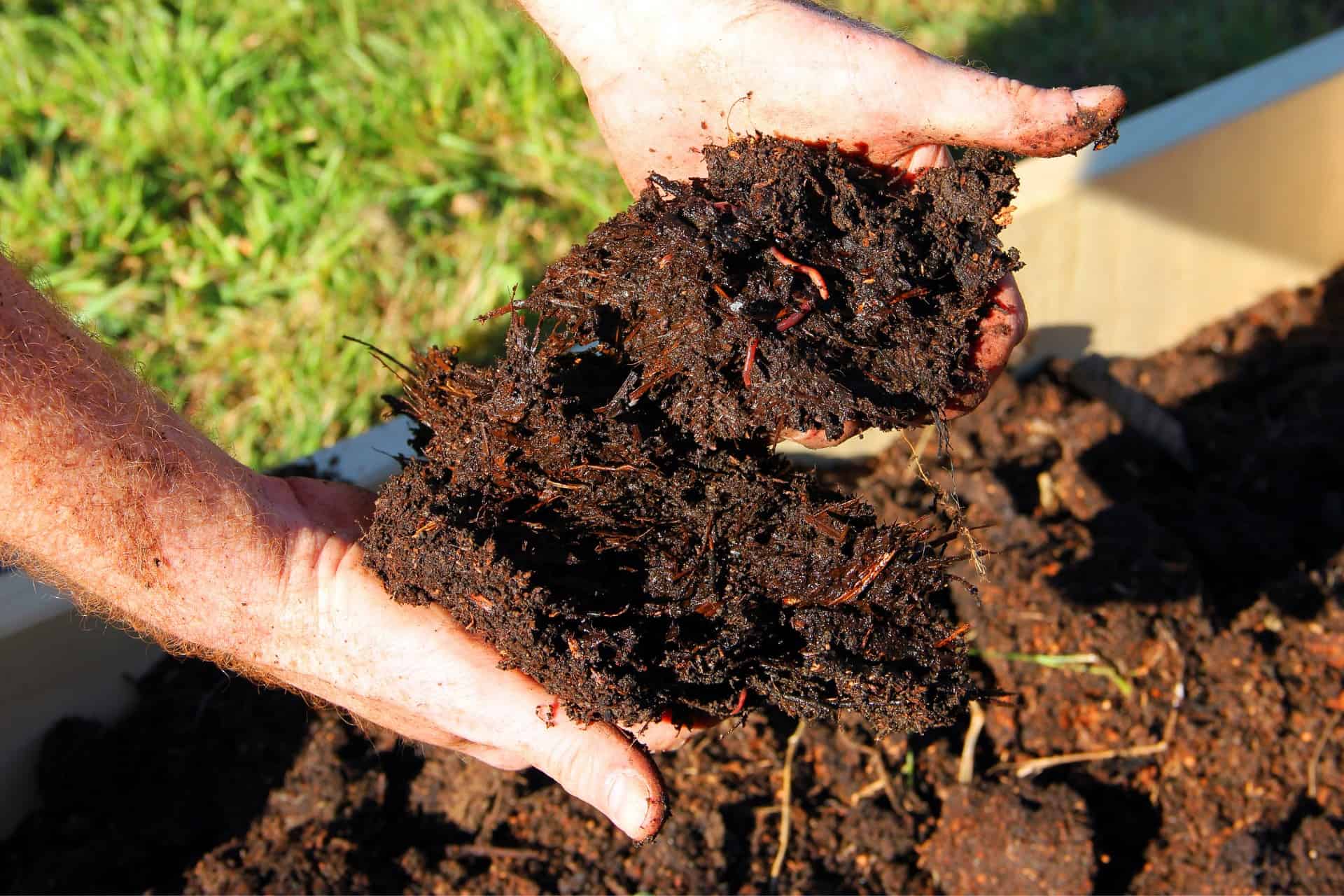
When you plant your tree and amend the soil with some compost, you need not feed it often. You can give a slow-release granular 10-10-10 feed over the root zone in spring. Then water well allows the fertilizer to drain into the soil and prevent root burn.
Temperature and Humidity
The baby blue spruce is tolerant to dry and harsh winters. It can also tolerate humidity to heat better than most other spruce trees. Still, the needles can turn brown and fall in very hot regions.
So, if you live in extreme heat, we recommend providing your tree some shade in the afternoon. Then, to overwinter in the landscape, you can spread some mulch around the tree’s base in the fall.
Then wrap the trunk with burlap to prevent hungry animals from feeding on the trunk. Also, stake the branches after a wet to heavy snowfall to help prevent them from snapping under the weight of the snow.
Pruning Your Baby Blue Spruce Tree
The growth rate of your plant is slow, from 12 to 24 inches annually, and needs no pruning. But if you want denser foliage, it helps to trim the foliage. You can prune half of the new growth on each candle. The candle is the section where the tip and development of branches occur each year. You can do this in spring.
Propagating Baby Blue Spruce Tree
The baby blue spruce tree can propagate through cuttings taken in mid-summer to plant in fall. Nonetheless, the cuttings take a while to root, about three months, and you need to use a rooting hormone. Also, grow cuttings in a humid and cool environment for success.
Sterilize your garden shears with some alcohol wipe.
Take a pot and combine a 50:50 ratio of sand and peat, cover it with water, and leave it to sit for a while.
Take your shears and cut about five inches from the tip with two sets of needles on a side branch.
Remove the bottom needles and peel off some bark at the cut end. Then, take a brush and place some rooting hormone on that end.
Poke a hole in the potting mix, place half of the cutting into the hole, and backfill with the mixture.
Place the container plant in a cool spot with dappled light and prevent direct sun.
Keep the soil moist and mist the air above the cutting for the water to fall onto the needles.
After two months, check to see if the root ball has been established, move your container outside into the full sun to help it acclimatize for a week, and bring it indoors every night.
You can transplant your seedling into the landscaping in early fall and place all the contents with your tree into the hole.
To grow your baby blue spruce from seed, you will need to collect and dry the cones. Then, when spring arrives, you can soak the seed for 24 hours in water and wrap it in a moist paper towel. Then, store them in the refrigerator for about six weeks.
Place some moist starter mix in a pot with your seeds and cover it about 1/4 inch. Place some plastic wrap over the container and keep it in a sunny place. Keep the soil moist until you notice new growth of about one inch.
You can then transplant your seedling to the landscape once acclimatized. Then add some mulch around your young tree and water it well for the first three years.
Picea Pungens Varieties
As with baby blue spruce, you find other varieties in the family to add a cool color to the garden.
Bakeri
The tree features a deep blue color and grows up to 20 feet high.
Glauca Globusa
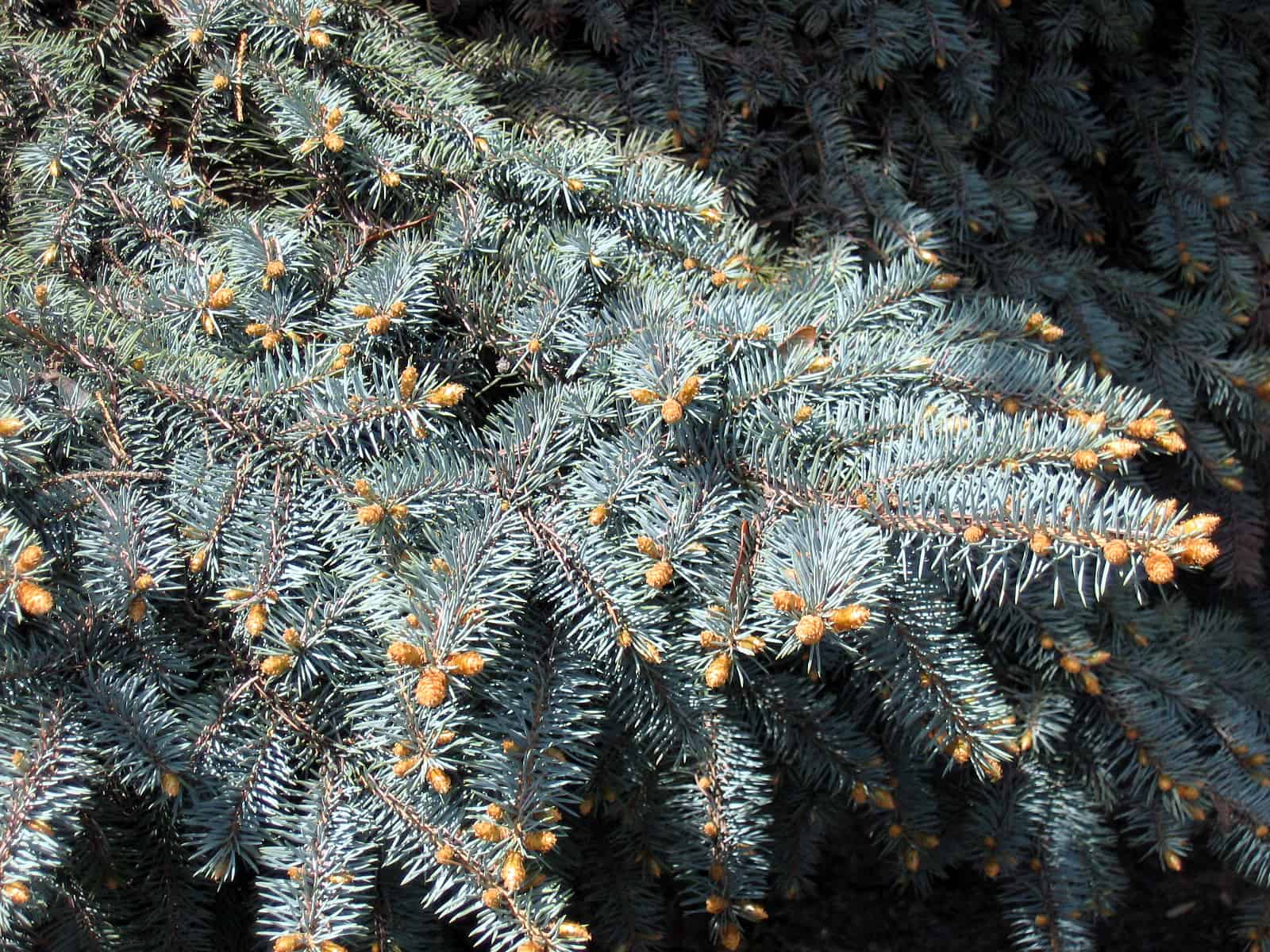
These trees grow up to five feet high to six feet wide and rarely produce cones.
Moerheimii
The branches on the tree droop, growing up to 30 feet tall.
Montgomery

The spruce is another dwarf variety that reaches six feet high with dense blue needles.
Common Problems With Baby Blue Spruce
As with most other trees, the baby blue spruce can become susceptible to pests and diseases. Watch for aphids forming galls or spider mites. When you see the needles turning yellow, it is a problem, and you may have insects bothering the tree.
The most common disease is Cytospora canker which causes the needles to turn brown, dropping from the branches.
Frequently Asked Questions
For the first season, water your plant well until established, which can be a couple of times per week, depending on the climate. Once established, your baby blue spruce will need less watering.
You can group your baby blue spruce about 12 feet apart to create a privacy screen, and it grows well with ornamental grasses, barberry, and hydrangea.
The baby blue spruce can be affected by white pine weevils as it tunnels into the bark to lay its eggs. With the holes, it weakens the tree causing it to die.
Plantly has the baby blue spruce available for you to buy. You need not leave your home as you can have it delivered to your door.
Whether you want to buy, sell, or simply reach out to other plant enthusiasts, Plantly is the right place to be!


